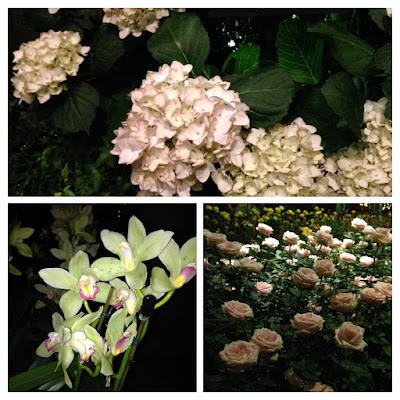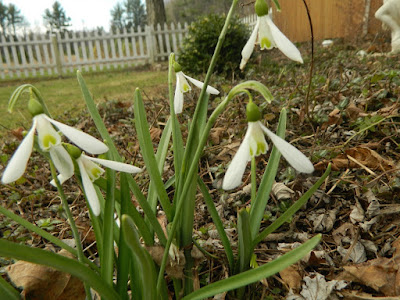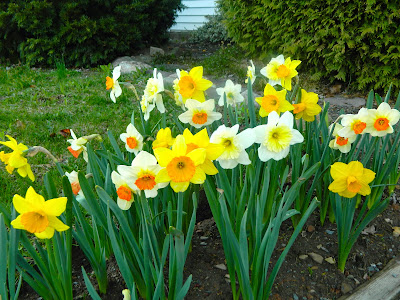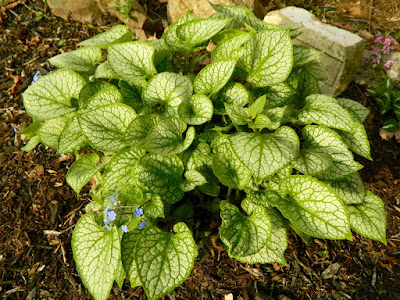I purchased three amaryllis bulbs for forcing this year. 'Ferrari' opened its first flower on Christmas Day and now has at least six blooms on its two stalks. A third stalk and bud are emerging, promising blooms into February. 'Ferrari' is Holland's finest strain of amaryllis, in my view. My other two amaryllis are slower to develop: 'Clown' has two stalks and will flower next, but 'Picottee' is behind with just one bud. 'Ferrari's' revved up bright red petals, however, make up for any shortcomings in the others.
 |
| Amaryllis Hippeastrum 'Ferrari' |
 |
| 'Ferrari' bloomed in time for the holidays |
I purchased my three amaryllis online from my favorite nursery, White Flower Farm. You may remember I visited there in July; I blogged about the trip here. I pot my amaryllis bulbs individually in 6-7" pots using a well-drained potting mix. I add water to the mix and stir until it is moist but not soggy. I fill each pot about half full, set the bulb on top and fill in with additional mix. A third of the bulb should be exposed and the top of the mix should be 1/2" below the rim to allow for watering. Firm the mix and water lightly. White Flower Farm provides a layer of decorative Spanish moss to finish off.
Place the pot where the temperature remains above 60 degrees F. Water only when the top inch of the mix is dry or the bulb may rot. Growth usually begins in 2-8 weeks. When growth begins the plants need ample sunshine so I place them in a south-facing window.
In the picture below, you can see how each amaryllis has developed so far:
 |
| Left to right 'Picottee', 'Ferrari' and 'Clown.' |
 |
| I place my amaryllis in a south-facing window until they bloom. |
As I don't have blooms on 'Picottee' and 'Clown' I am using the illustrations from the White Flower Farm catalog. Can't wait until mine look like this:
 |
| Amaryllis Hippeastrum 'Clown' -- photo White Flower Farm |
 |
| Amaryllis Hippeastrum 'Picottee' -- Photo White Flower Farm |
Once my amaryllis blooms, I take it out of the sunlight and put it in a cooler spot, so the flowers will last longer. My dining-room table is a good place.
 |
| Once they bloom, place them away from direct sunlight |
I hope to keep my amaryllis for blooming next year. I'll explain how I do it in a future posting.
Did you force bulbs for the holidays? For tips about forcing amaryllis, hyacinths, paperwhites, daffodils and other bulbs, click on this link to read my article in the Pocono Record newspaper.
Wishing all my gardening friends a happy and healthy 2017,
Pamela x
I love reading your comments. I hope you leave one so I’ll know you visited!
I look forward to visiting your blog in return.















































